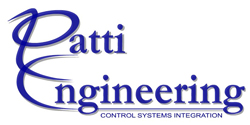The Kawasaki Robotics project on the existing robotics paint system consisted of upgrading two Kawasaki robots and replacing four Kobelco robots with new Kawasaki robots.
Contributed by | Patti Engineering, Inc.
Ed Minch, Director of Sales & Engineering – Automotive, at Kawasaki Robotics (USA), Inc., knew exactly who to call when he secured a robotics underbody sealer system job for the Toyota Camry’s paint line at Subaru of Indiana Automotive (SIA) in Lafayette, Indiana. Knowing his customer, SIA, uses Mitsubishi controllers made his decision an easy one. Patti Engineering, a Mitsubishi Authorized Integrator with extensive expertise in Mitsubishi automation technology, would be the right choice for the integration job. Ed knew Patti Engineering has a wealth of well qualified engineers with Mitsubishi expertise. He had seen our team in action before and knew we would deliver the top notch quick integration required to keep SIA running with as little downtime as possible.
The Kawasaki Robotics project on the existing robotics paint system consisted of upgrading two Kawasaki robots and replacing four Kobelco robots with new Kawasaki robots. The existing system used a Perceptron vision system and was controlled by Mitsubishi A Series PLC’s. The decision to upgrade this system was based primarily on two factors:
- With the Kobelco robots being discontinued and approximately 14 years old, obsolete parts were a problem and causing significant downtime issues. Also, the new technology available today offers significant improvements in speed and accuracy.
- The effectiveness and accuracy of vision systems have increased dramatically in the past two years. Upgrading the vision system translates into significantly reduced manual intervention with the significant increase in the robots ability to detect and then accurately seal where needed.
To implement the upgrade, the four older discontinued Kobelco robots were replaced with Kawasaki robots, the Perceptron vision system was replaced with a Liberty Reach vision system, and the Mitsubishi A Series PLC was upgraded to a Mitsubishi Q Series PLC.
The booth control is handled by a Mitsubishi QnU CPU with integrated Ethernet. Safety functions are handled by a Mitsubishi MELSEC-QS Safety PLC. Communications between the booth PLC, the safety PLC, and an existing Q Series PLC (dispense equipment control) are accomplished over MELSECNET. Communications with the robots are handled using CC-Link (for I/O) and Ethernet (for data). Communications with the vision system are handled using the integrated Ethernet port on the booth control PLC. Plant communications are through a separate Ethernet card in the booth control PLC rack.
Patti Engineering’s scope of work was developing, debugging and commissioning PLC software for all three PLCs. Ed Minch offered the following perspective on implementing this type of project:
"Automotive manufacturing robotic systems are installed, started up and launched in a very tight time frame. When it comes to control system software implementation, there is not much time to waste trying to figure out what needs to be done. Patti Engineering has the experience to provide system engineering resources for tightly scheduled projects working under, at times, extreme conditions. In our industry, you need to surround yourself with reliable, team oriented engineers who know what needs to be done and are willing to stretch some limits to achieve success. You can do that with Patti Engineering."
Ed was particularly pleased with the performance of our engineer in this months’ spotlight, Steve Buffmyer. Steve’s experience and capabilities enabled the project implementation to run smoothly, keeping downtime to a minimum.
The project at SIA has been a great success. Implementation was completed with very little downtime. The new system is preforming with reduced maintenance required and substantial gains in efficiency and speed. In addition, reduced operator intervention is required as a result of the advances in the vision system accuracy.
Robotics is an integral part of the manufacturing process in the automotive industry. In addition, machine vision systems, including vision-guided robots, are found throughout the automotive manufacturing process, from inspecting automotive engines, tires, and electronics, to assembling panels into a finished vehicle. The dramatic advances in these technologies can mean substantial gains in efficiency, accuracy and overall quality. When implementing upgrades or commissioning a new system, an experienced control system integrator is an important resource for a successful project.
 For more information on our control system integrations services, contact Patti Engineering for a free initial consultation.
For more information on our control system integrations services, contact Patti Engineering for a free initial consultation.
About Patti Engineering, Inc.
Patti Engineering provides an array of products in the fields of automation solutions, sortation and distribution, shop floor IT solutions, energy management, asset management and service contracts.
Phone: 1-800-852-0994 (US Only)
(248) 364-3200
The content & opinions in this article are the author’s and do not necessarily represent the views of RoboticsTomorrow
Comments (0)
This post does not have any comments. Be the first to leave a comment below.
Featured Product


